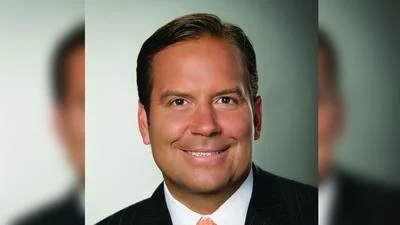Illinois Department of Human Services Child Care Advisory Council met Nov. 15.
Here are the minutes provided by the council:
Present:
Mykela Collins
Marcy Mendenhall
Curtis Peace
Brenda Eastham
Stacie Ealey
Ellen Chavez
Lauri Morrison-Frichtl
Tina Staley
Dr. Charles Montorio-Archer
Laurie Rhodes
Dan Harris
Bethany Patten
Michael Garner-Jones
Allison
Ayesha Calhoun
Carie Bires
Kisha Davis
Lori Longueville
Lanette Woodard
Joselle Escobar
Nina Duenas
Edie Washington
Wendy Williams
Chris Tokarski
Carolyn Marmolejo
Teri Talan Ellen Chavez
Next meeting: January 25, 2023, 1-4pm, Zoom
1. IDHS Updates
Governor announced expanding and extending through 7/2023 the Strengthen & Grow Child Care grant.
CCAP eligibility for job seekers also extended through 7/2023.
Effective 12/1/2022: Earned/unearned income reclassification for CCAP. No longer counting: TANF, Alimony, Child Support, adoption assistance, SSI and SSA.
Policy currently states it is not counting income from child of a family aged 21+ but will be updated to read that earned income from any child living in the home will not be counted.
2. Grants
Majority of Federal relief funds received have been distributed to providers already.
CARES: All funds have been spent.
CRRSA: About 1/2 of funds have been spent the other 1/2 are in contracts for this year and we have until September 2023 to spend all these funds.
ARPA: Designed to be spent on specific programs. About 86% of funds have already been distributed through Child Care Restoration Grant, Child Care Workforce Bonus Grant, and SGCC Grant.
ARPA Discretionary: We have until September 2023 to have these funds in contracts. We will have until September 2024 to have funds spent. We are currently focusing on grants with funds due to be spent then focusing on the ARPA Discretionary Grant.
CARES: Minority of funds went to CCAP Flexibilities at the beginning of the pandemic when IDHS paid for eligible days, paying for the eliminated copays, and emergency stipend programs. The remainder of these funds supported the Child Care Restoration Grant.
CRSSA: Early Childhood Access Consortium for Equity for early childhood workers is a $200mil investment and has been funded with CRSSA funds but has also used some ARPA Discretionary funds. "Other" mentioned under CRSSA are smaller investments we can use funds for, including: ExceleRate Child Care Center Pilot, Early childhood Enrollment Campaign, Birth to Five Illinois, Narrow Cost Analysis, Infant/Early Childhood Mental Health Consultant Expansion.
ARPA Discretionary: DHS is exploring if we can continue to use these funds as grants to providers after FY 2023, more information on this to come later.
The Child Care Contracts Ad Hoc Committee had their first meeting on 11/2.
Reviewed goals and roles of advisory group
Discussed two major contract approaches:
Solely for providers with revenues from private tuition and CCAP
Providers with multiple public funding streams
Next Child Care Ad Hoc meeting scheduled for 12/2. Please reach out to Bethany if you are interested in participating in Ad Hoc meetings.
3. Quality & Workforce Sub-Committee Recommendations
Recommendation is to create a "special population" so that all early education care staff and school age program members can receive a $1.00 copay rather than those who only qualify for CCAP.
Recommendation is that IDHS explore the concept of a shared service model for our early education and care field. Looked at Iowa and Wisconsin service model (Childcare substitute pool, buying supplies, purchase software to track attendance and process billing) and now looking for IDHS for thoughts/guidance.
4. Sub-Committee Regroup
Family Engagement:
Find better ways to engage more families.
Allow parents to participate during later hours of the day when more parents/providers are available, and we can get more participation and feedback (recommendation soon to be submitted).
2. CCAP Policy:
DHS asked us to look into policy recommendations that were proposed and dive a little deeper and see what other states are doing.
Decouple CCAP reimbursement rate and private tuition rate
Put together work focus groups to speak with providers about how this can affect them.
Child taking up a slot on 70% rule and how it affects providers.
Childcare shortage and how it might affect some policies.
3. Quality and Workforce:
Difficulty of getting candidates evaluated.
How can we as a committee help make this an easier process?
Specific trainings that may be beneficial to be added.
Issues we have come across to get back the background checks.
CCAC Policy Subcommittee 11-15-2022
In attendance: Chris Tokarski, Brenda Eastham, Mike Garner-Jones, Lori Longueville, Carie Bires, Carolyn Marmolejo, Dr. Charles A Montorio-Archer, Ayesha Calhoun (CCAU), Rosa, and Allison
Why are we doing this? Provider lens, parent lens, barrier, obstacle, fiscal implication. What we have in place / looking at policies we have - what's working, what isn't
Decouple CCAP reimbursement rate and private tuition rate
What other states have decoupled reimbursement rate from private tuition? What were the effects?
Louisiana - 10% private rate, pay early
Possible way to allow CCAP to be a higher rate than private pay - CCAP administrative costs - charge state more because of administrative costs
Why do we need to look at decoupling or allowing CCAP rate to be higher than private rate? We keep raising rate for at-risk population people just over the income max of ccap
We're going to get to a point where private pay is too much. - southern part of the state is at that point.
Is a pilot an option?
May need to limit difference?
Allison - daycare in Georgia - contract for supports - STABLE grant - in addition give $1,000/quarter to teachers - providing these supports because minimum wage $7.50
Connecticut - rate up to 85% SMI
In 2020, families already receiving assistance could continue doing so until their income reached $63,299. In 2021, the exit eligibility limit was $65,878. The state did not have a separate exit eligibility limit in 2001. As of July 2021, the income limit to qualify for assistance was increased to $60,811. As of October 2021, the income limit to qualify for assistance was increased to $63,044 (60 percent of state median income), and the exit eligibility limit was increased to $68,298 (65 percent of state median income), to adjust for the updated state median income estimate.
https://nwlc.org/wp-content/uploads/2022/06/State-of-Child-Care-2022-WIP-accessibility.pdf
Educating the child - having a diversity of programs
We need to look at what the States responsibility to the infrastructure?
Are the rules applied the same to profit and non-profit programs?
Possible need: Focus groups - discuss with providers from different regions - different ages - what does this do?
Continue eligibility regardless of ANY loss of eligible employment or education activity
What other states have done this?
See PDF - can we find out fiscal implications from those states that don't cancel out - did this blow the budget for other states? Is this across the board for providers?
CCMS doesn't track when cancellation is due to loss of employment. Can we ask R&Rs to track - loss of employment
Difference between children going to quality rated programs and relative / friend / family / neighbor, Standards attached for quality, costs more to be quality and jump through all the hoops
No - Changes in employment including schedule, employer, and income may be voluntarily reported. Changes in employment must be reported only if it would cause the family's gross monthly income to exceed 85 percent of state median income.
Twelve states allowed families to continue receiving child care assistance while a parent searched for a job until the end of the family's 12-month eligibility period in 2021. One of these states changed its policies from allowing parents to continue receiving child care assistance while searching for a job for up to three months in 2020.
All CCAP families that are income and service eligible are eligible for up to five days per week of care regardless of the hours in activity.
How does the committee recommend that IDHS reconcile this policy change with the current attendance threshold of 70%? Child takes slot. Children have to be attending - some type of agreement with the parent so provider doesn't lose out with 70% rule.
Is it possible that this policy change will lower payments to providers, and what does the committee recommend that the State do about this?
Children must be attending.
Needs to be based on the parents ask. . . if they aren't going to bring their child then you dip under the 70% threshold and the center loses out.
Should it be provider type based?
Also need to look at what this does to the child care shortage we are already dealing with?
Revise add-on or other payments for providers caring for children with documented disabilities
How will "documented disabilities" be defined?
What will be considered documentation?
What should the add-on or other payment be set at?
Would the add-on or other payment differ based on documented disability, or percentage of enrollment with this flag, or no?
IDHS Quality and Workforce (Q&W) Subcommittee Minutes
Attendees: Marcy, Laurie, Hollie, Dan, Terry, Teri, Tina, Edie, and Casey
Minutes completed by: Marcy
1. Shared Services
The group discussed the recommendation that will be forthcoming to the CCAC at the next meeting.
2. CDA Discussion
To follow up from the prior meeting, Marcy presented information on the CDA credential process. A map from www.YourCouncil.org and it appears that there are clusters and deserts of Professional Development Specialists (PDS) in Illinois. Tina shared that she is on listed as a PDS and she is no longer, it is not updated map. Marcy shared that in the Quad Cities area that we have one PDA who completes the assessments. There was discussion about working with CCR&Rs and Birth to Five Councils to continue to bring awareness so we can enhance our work force.
3. Fingerprinting
Tina brought up the delay in fingerprinting as a barrier to hiring staff. Edie provided background and updated information for those providers who are still experiencing delays.
https://www.dhs.state.il.us/?item=147797





 Alerts Sign-up
Alerts Sign-up